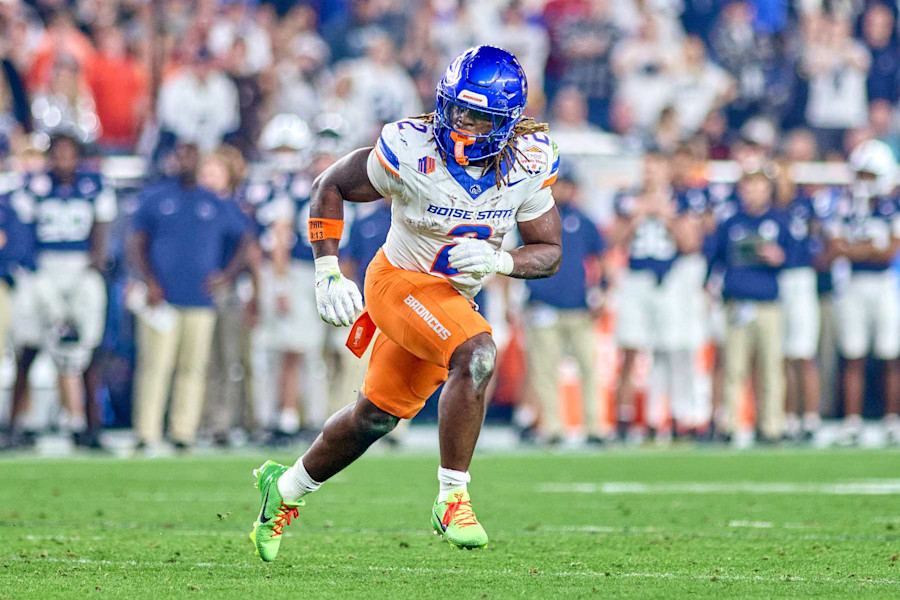If your favorite team doesn't win a national championship, fear not. There is still conference pride at stake.
That, in truth, is a fascinating idea—one that has spawned plenty of opinions. Some college football fans prefer to see a familiar opponent be a strong representative of the conference, while others are staunchly against the idea of cheering for another member of the league.
Sure, you might not be quick to chant S-E-C. But there certainly is a hierarchy of conferences around the sport.
The following ranking is based entirely on what happened during the 2024 campaign. While the order ultimately is subjective, the number of College Football Playoff teams, bowl-eligible programs and nonconference records are factors.
9-5. Group of 5 Leagues

9. Conference USA
The simplest way to describe the campaign is that at no point did we include a fifth projected bowl rep from Conference USA. That proved true with league champion Jacksonville State, runner-up Western Kentucky, Sam Houston and Liberty at six-plus wins. Louisiana Tech ended up playing a postseason game after Marshall removed itself from the Independence Bowl due to roster issues.
8. MAC
One notable appeal for the MAC is a 3-0 record against Mountain West opponents, two of which made a bowl. However, the MAC lacked a 10-win team during the regular season. Seven programs played in a bowl, highlighted by league champion Ohio beating C-USA winner Jax State.
7. Sun Belt
Similarly, the Sun Belt didn't have an overwhelming top team. Label it parity if you'd like, but there were a bunch of late losses that impacted the league's front-runners. The bright side is the Sun Belt featured eight bowl reps after picking up a few quality nonconference wins—James Madison over North Carolina, among them—this season.
6. Mountain West
If there's a spot to gripe, it's probably sixth and seventh. While the Sun Belt had eight bowl qualifiers, the Mountain West managed five. However, that group included CFP team Boise State and a UNLV squad that defeated three power-conference opponents. Five more MWC programs beat Oregon State or Washington State, too. It's fair to say Boise and UNLV are doing some heavy lifting here.
5. AAC
Army and Memphis finished the year ranked in the AP Top 25, and Navy was narrowly the first team out. All three programs hit double-digit victories, while runner-up Tulane notched nine. Throw in four additional bowl teams, and the American paced the Group of Five again.
4. Big 12
You could make an argument to have the Big 12 one spot higher. And if you ask league commissioner Brett Yormark, he'd probably have a strong opinion about this placement.
The good: Arizona State rode a second-half surge into the CFP, where it nearly stunned Texas (fittingly) with a second-half comeback. BYU and Iowa State both used a postseason win to hit 11 victories, and they landed in the final AP Top 25 with Colorado.
Four others—Baylor, Kansas State, TCU and Texas Tech—tallied eight or nine wins, and West Virginia made a bowl.
The negative is the remainder of the Big 12 was pretty mediocre, creating a substantial gap in the league. Seven of the conference's 16 teams fell short of bowl eligibility.
3. ACC
Which kind of conference depth do you prefer? The reality is you could cherry-pick a narrative for the ACC or Big 12.
The former had a single 11-win program, while the latter had three. While the ACC boasted four teams of 10-plus victories, nobody else in the Big 12 cracked double digits. However, the ACC managed six of eight-plus wins compared to eight in the Big 12. But then, you have the ACC with 13 bowl-eligible teams over the Big 12's nine.
So, honestly, let's make it simple.
BYU defeated SMU, sure, yet SMU wound up making the College Football Playoff with ACC champion Clemson. That 2-to-1 advantage cannot be touched by the comparable Big 12.
That's a very basic metaphorical hair to split, but there wasn't much difference between the leagues this season.
2. SEC
No matter your preference on the ACC or Big 12 at No. 3, either conference is soundly behind the SEC.
During the regular season, the SEC stood a bit taller than the Big Ten with a 3-1 record in those matchups. Georgia, Texas and Tennessee were CFP locks, and the SEC claimed three of the four narrowest misses with Alabama, Ole Miss and South Carolina.
However, the postseason told a less favorable story for the SEC. Beyond a string of losses to Big Ten opponents in bowls, Texas was the only semifinal qualifier from the conference.
Be careful not to overstate the league's decline, though.
In total, 13 teams earned bowl eligibility. No other conference had as many legitimate Playoff candidates. I wouldn't start to scream the SEC is losing its grasp on national power just yet.
1. Big Ten
In this particular season, however, the Big Ten claimed the throne as the country's top conference.
Ohio State secured the national championship after Penn State reached the CFP semifinals. Oregon was the lone unbeaten FBS team entering the postseason, and Indiana also made the Playoff.
The middle of the Big Ten wasn't as strong as the SEC's non-elite tier during the regular season. But in four non-CFP bowl matchups, the Big Ten posted a 3-1 mark. Those things can coexist with the acknowledgments that bowls are less consequential and still matter a bit.
Overall, the Big Ten sent 12 of its 18 programs to a bowl. Although that ratio is smaller than the ACC and SEC, no other conference can compare in 2024 to what the Big Ten achieved this postseason.
For one year, the S-E-C chant isn't as strong as B-I-G.



Read 179 Comments
Download the app for comments Get the B/R app to join the conversation